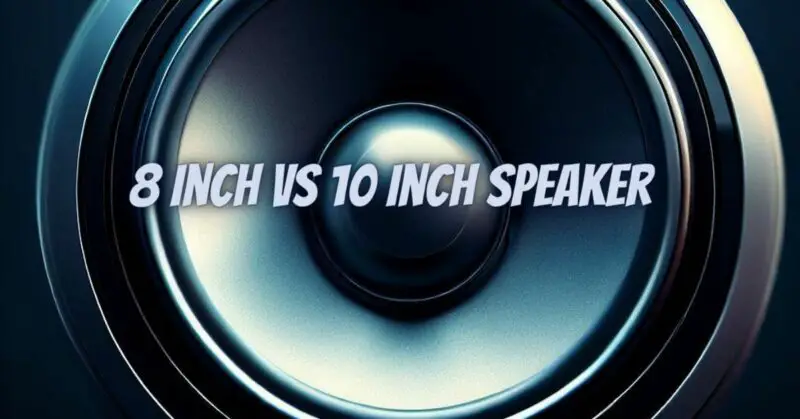Choosing the right speaker size is a fundamental decision when building a sound system for various purposes, be it for home audio, car audio, or professional applications. Among the many options available, two popular sizes are 8-inch and 10-inch speakers. In this article, we’ll explore the differences between 8-inch and 10-inch speakers, covering aspects such as sound quality, power handling, size, and intended use to help you make an informed decision.
- Size Matters
The most apparent difference between 8-inch and 10-inch speakers is their physical size. The measurement refers to the diameter of the speaker’s main driver, which has significant implications for sound production.
- 8-Inch Speakers: These speakers are smaller and more compact. They are often favored for applications where space is limited, such as bookshelf speakers, car audio systems, and smaller studio setups. Their compact size makes them easy to integrate into various environments.
- 10-Inch Speakers: In contrast, 10-inch speakers are larger and produce more significant sound due to their increased surface area. They are commonly used in larger bookshelf speakers, floor-standing speakers, and can provide a fuller sound in car audio systems or professional setups.
- Sound Quality
The size of a speaker can impact its sound quality, influencing factors like bass response, midrange clarity, and overall frequency range.
- Bass Response: Generally, 10-inch speakers have an advantage in bass response. Their larger size allows them to move more air, resulting in deeper and more pronounced bass. If you prioritize powerful bass, especially without a subwoofer, 10-inch speakers are often the better choice.
- Midrange Clarity: 8-inch speakers tend to excel in midrange clarity. They produce more focused midrange frequencies, making them suitable for applications where vocal clarity and instrument definition are essential, such as home audio and studio monitoring.
- Power Handling
Power handling capacity refers to a speaker’s ability to handle the electrical power sent to it without distortion or damage. This capacity is a crucial factor when considering speaker size.
- 10-Inch Speakers: Due to their larger size, 10-inch speakers often have a higher power handling capacity compared to 8-inch speakers. This means they can handle more watts of power, resulting in the potential for higher volume levels without distortion.
- 8-Inch Speakers: While 8-inch speakers may not handle as much power as their larger counterparts, they can still deliver impressive volume levels for smaller to medium-sized spaces. Their efficient power handling makes them suitable for various applications.
- Intended Use
Your choice between 8-inch and 10-inch speakers should align with your specific needs and intended use.
- 8-Inch Speakers: These are ideal for applications where space is limited or where precise midrange reproduction is crucial. They work well in home audio systems, recording studios, and smaller listening environments.
- 10-Inch Speakers: If you require more pronounced bass response, 10-inch speakers are better suited for larger rooms or applications where deep bass is essential, such as home theater setups or professional audio systems.
In the 8-inch vs. 10-inch speaker debate, there is no one-size-fits-all answer. Your choice should depend on your individual requirements and priorities. Consider factors like size, sound quality, power handling, and intended use when making your decision. Both 8-inch and 10-inch speakers have their unique strengths, and the right choice will help you achieve the sound experience you desire in your specific audio setup.


